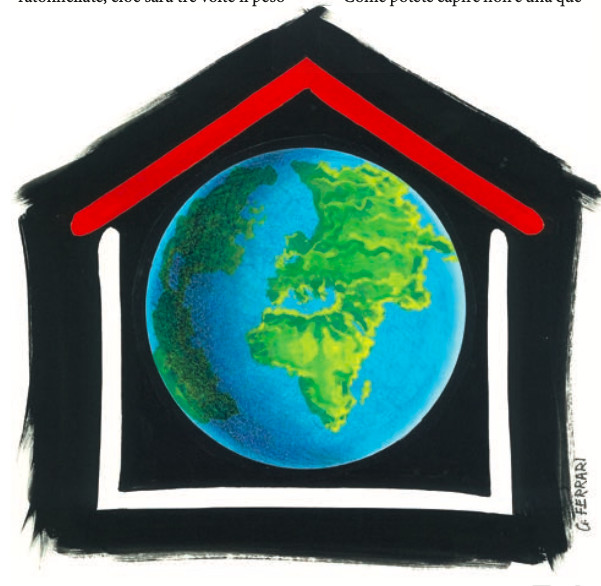We destroy life in our home
Publish date 20-05-2021
 Since the Nobel Prize for Chemistry Paul Crutzen theorized in 2000 that we are in the era of the Anthropocene, we have tried to find parameters and meters of measurement to understand how man is increasingly able to modify life, environment, climate, ecology of the Earth.
Since the Nobel Prize for Chemistry Paul Crutzen theorized in 2000 that we are in the era of the Anthropocene, we have tried to find parameters and meters of measurement to understand how man is increasingly able to modify life, environment, climate, ecology of the Earth.
I want to mention two ideas that analyze the relationship between the mass produced by man and the living biomass (from plants to bacteria, from animals to viruses). Uno is an animated graphic video, an excellent educational and informative tool. The other is a complex scientific study with many calculations to interpret. Both were greeted (see Nature magazine) with titles like "The overtaking!".
The anthropogenic mass (what we artificially produce) has exceeded in weight the living mass of the whole planet. I remember that all men in terms of weight represent 0.01% of living beings. The symbol of this statement is a two-seat axis that is balanced on a central pivot represented by the Earth. On the left all the products of human activity "sit"; on the right all living beings (https://anthropomass.org/).
The study is by the Department of plant and environmental sciences of the Weizmann Institute of Science (coordinated by Prof. Ron Milo) published in December 2020. All together the human products correspond to a weight of 1.1 teratonnes. At the top of the production list is cement (40% of the total), to which must be added an equivalent share of sand and crushed stone used as basic material for roads and buildings. The other materials are: metals, asphalt, bricks, wood, glass, plastic ... The mass of plastic, with its 8 billion tons is double that of all animals living in water and on land. Buildings have a mass greater than that of trees. To produce all this material, man has almost halved the biomass of the Earth, causing it to collapse from 2 to 1 teratonne.
Without reversals, by 2040, the weight of man-made materials could exceed 3.3 teratonnes, i.e. it will be three times the weight of all living beings, assuming that the current weight, already greatly reduced by man, remains.
The calculation was made by default because, for example, waste is not counted (another 100 billion tons and the mass is weighed net of its water content, as if it were dry.
The analysis also does not take into account the billions of tons of earth moved during the extraction of minerals such as coal or how many tons of ore were processed to obtain a small weight of gold (eg a wedding ring). If the calculation were able to take into account all these aspects of the life cycle of some materials, it could also be found that it is not in 2020 that the anthropogenic mass has surpassed the natural biomass, but this happened in 1977! As you can understand it is not a mathematical and statistical question, it is a question of sustainability: better to focus on it!
Carlo Degiacomi
NP february 2021







